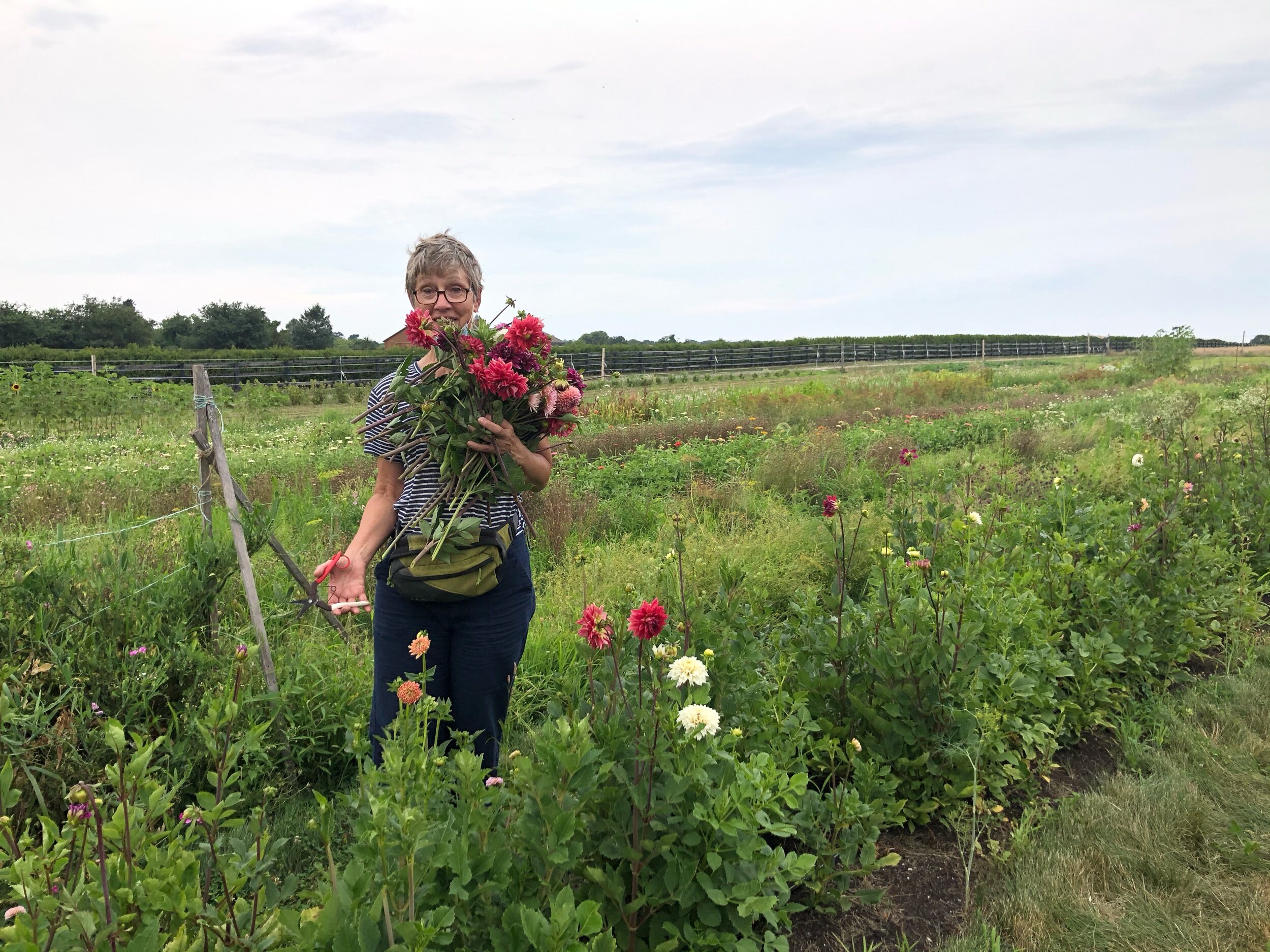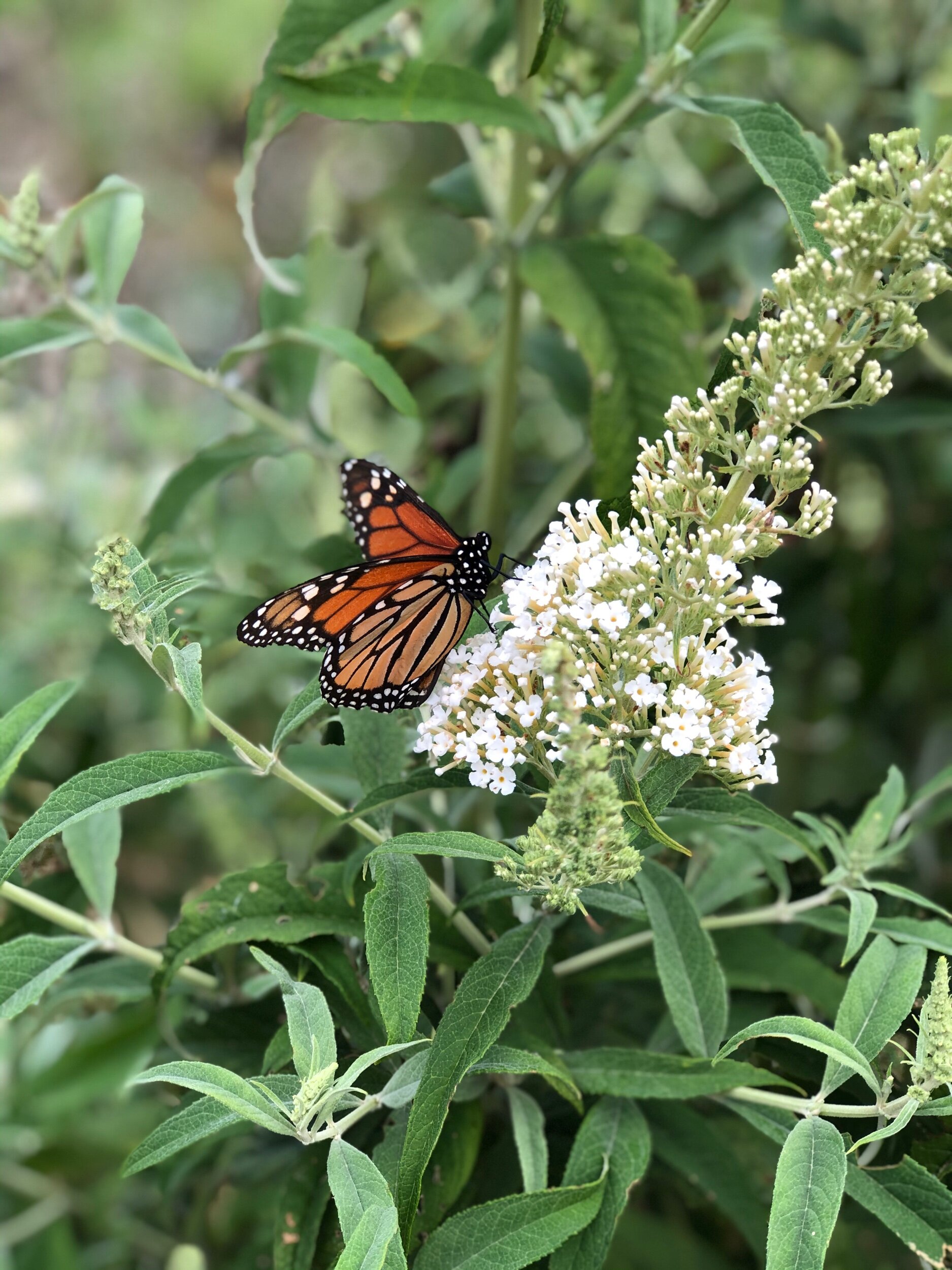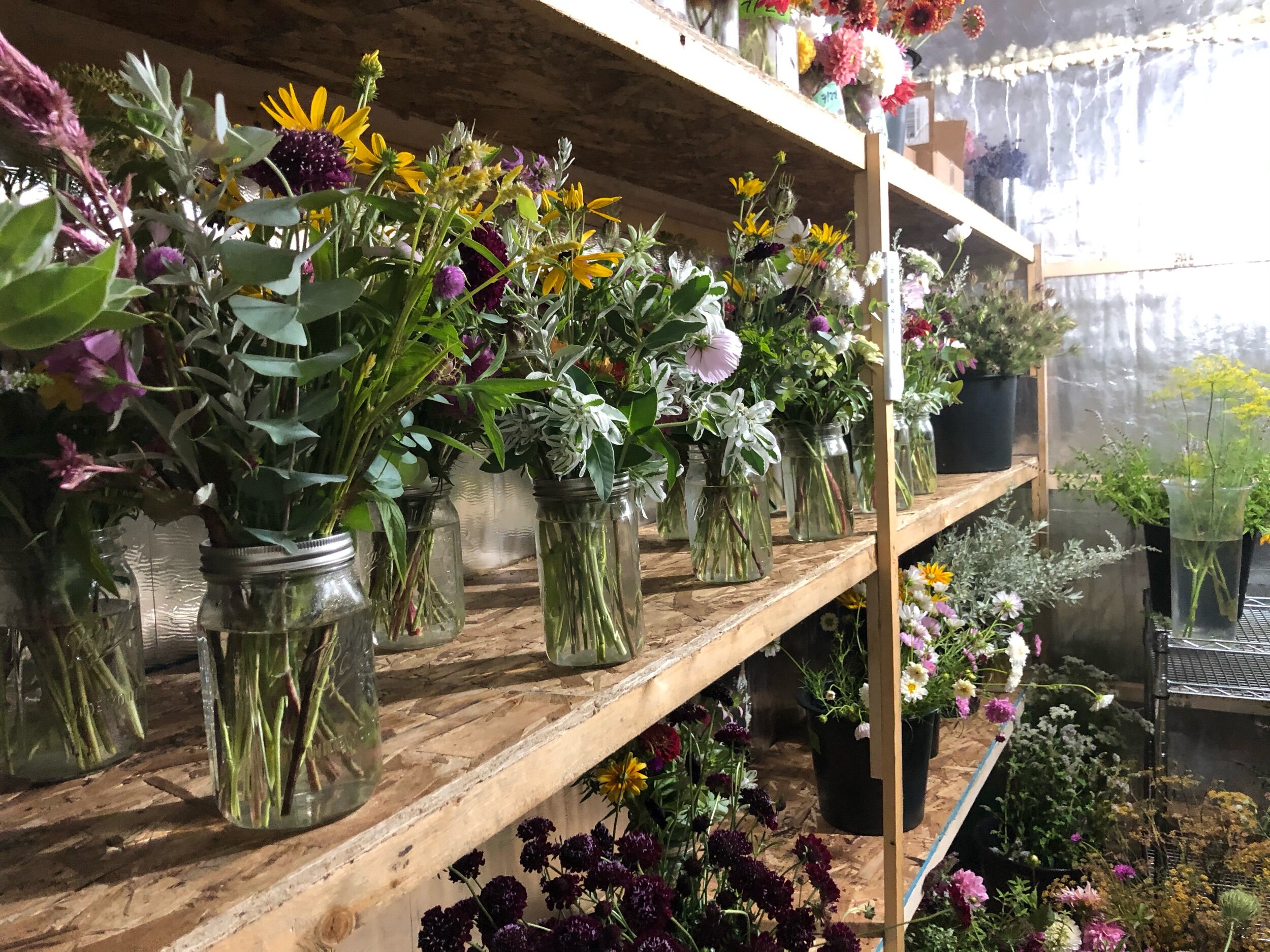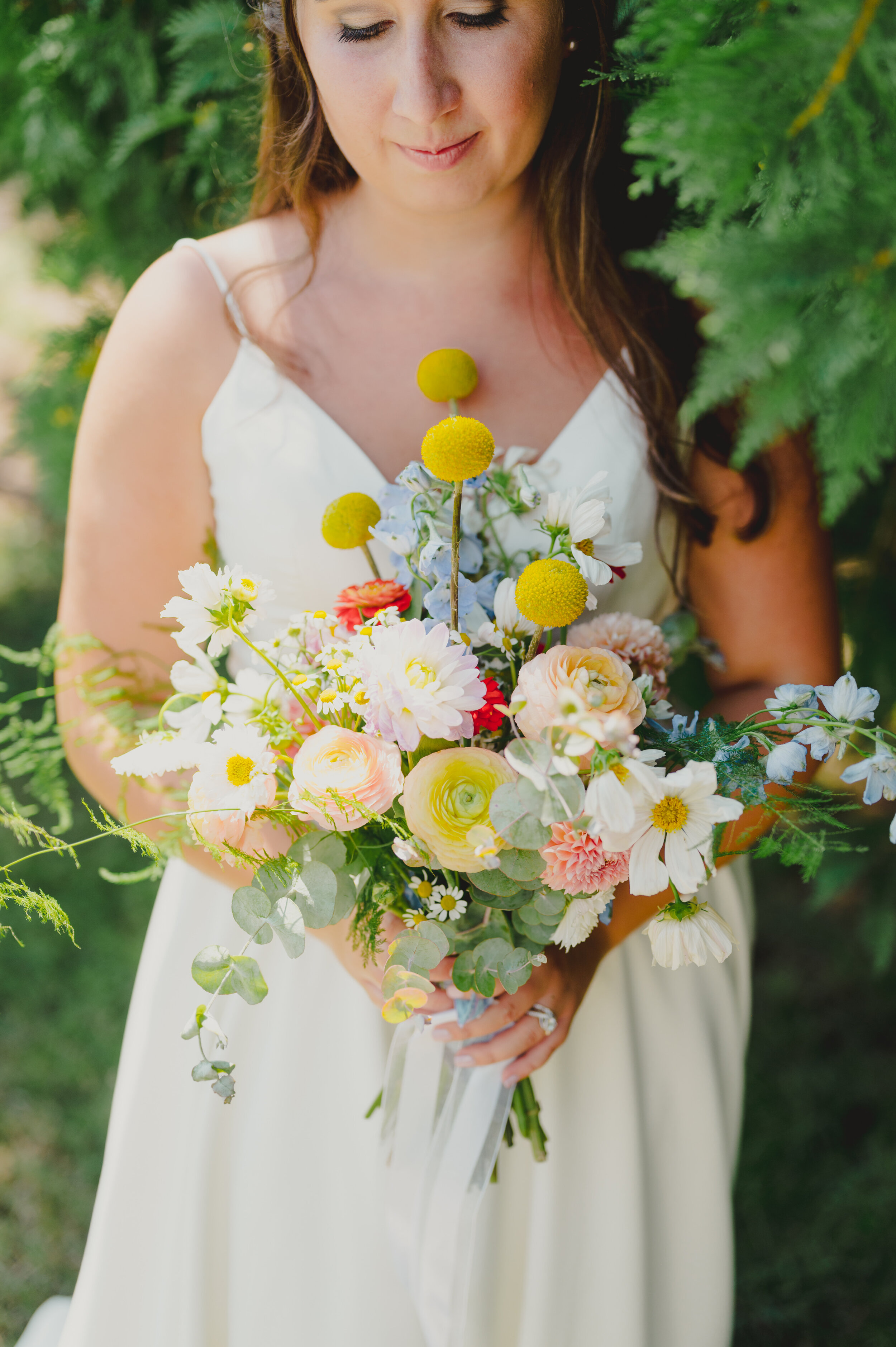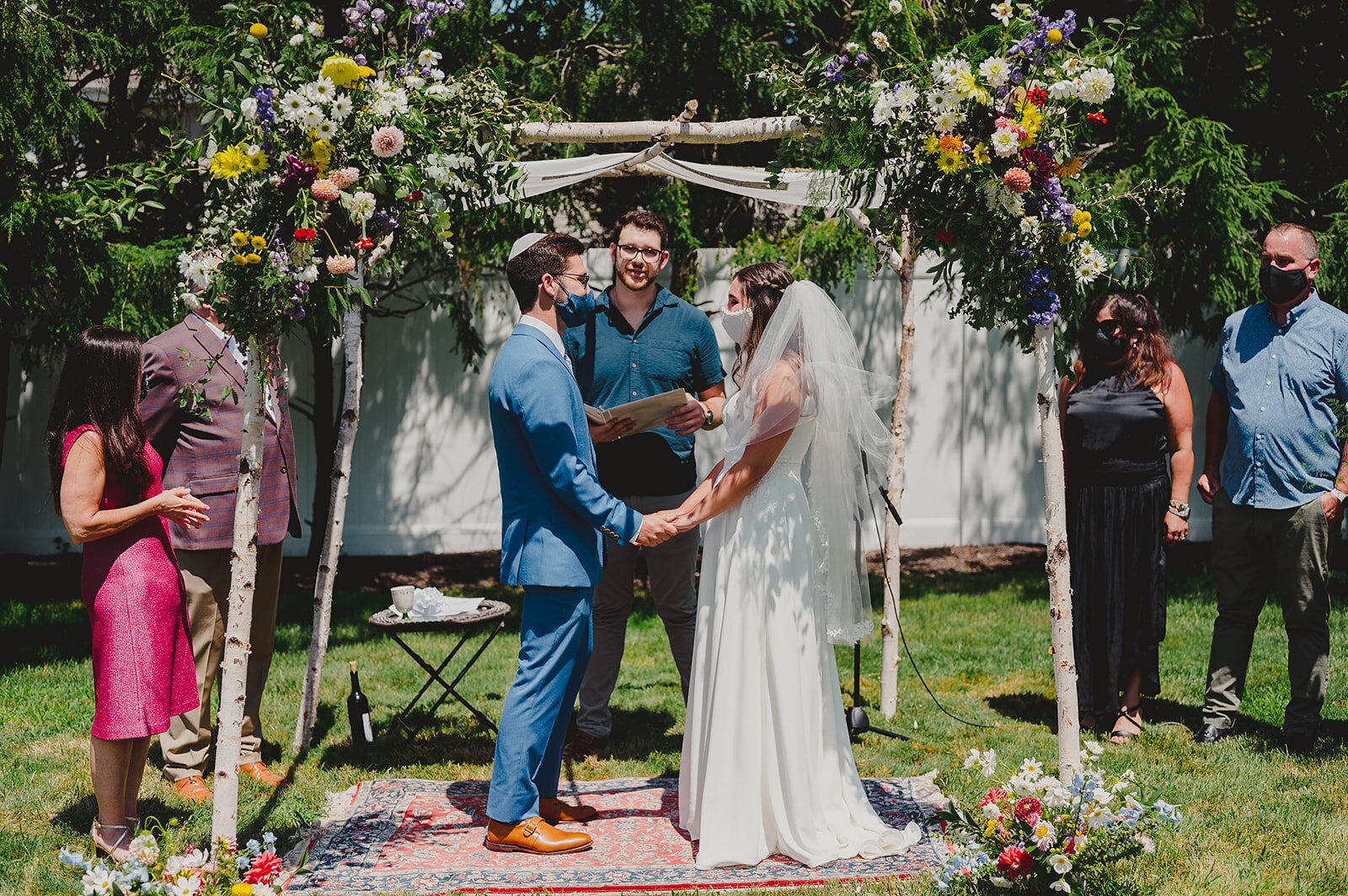Taking care to know the land where flowers are grown is important not only to my brides but also to the philosophy that guides my floral design. When a bride touches a bouquet, puts her face down into a collection of blooms accompanying her on her most prized day, it’s only appropriate that her flowers breathe back life into her. The journey of an imported flower, doused in chemicals, made to survive days of transport is in many ways depriving the blooms of their true nature. Wedding flowers should feel like they are not just playing into a production but rather reflecting the space and even time when a wedding occurs. An anniversary is only made more sweet when walking down the sidewalk and seeing the same wedding flowers celebrating you year after year.
When booking a wedding, one of my first priorities is identifying a local farm. While I do not buy every bloom from a flower farm, the flowers that steal the show are ALWAYS local. My hope in writing this article is to elevate flower farmers and to get more local blooms in your bouquets. As floral designers, we have the potential to shift the industry towards uplifting the flower farmers and the blooms they grow so that our customers receive the freshest and most excellent of blooms.
Jeremy McDonald Photography
On the Northern, most Eastern tip of New York, sits North Fork Flower Farm, a small two acre flower farm where a gaggle of color grows in between the bay and the sound. Monarchs and bumblebees hop from flower to flower filling up on the pollen of blossoms so fragrant you can taste them. Quite literally, the farm is home to an assortment of edible flowers where one farmer makes syrups and potions you can eat.
Photography by me #portraitmode
Drianne, one of North Fork Flower Farm’s Partners and Founders—along with her rescue Shepherd— walk me through fields of Dahlias, Cosmos, Gomphrena, Madam Butterfly Snapdragons, Ageratum, Lisianthus and so much more. She describes the color palette she gravitates towards, as one on the spectrum of purples, pinks and blush. Though, there are colors of all kinds popping up and catching my attention. After observing her fields, we go inside to see where the flowers are housed after they are clipped. The cooler found inside the barn serves as a temporary home for flowers, bringing them life and sustenance through cooling hydration. In this space she shows me the deliberate and delicate way she places each flower together to prepare the blooms for her flower share. As she selects varieties for each bouquet, it is as if she is picking colors and kinds that will most enjoy living next to each other in a vase.
Drianne and her farm partner, Charles, met years ago and were impressed to learn that they shared the same dream of starting a flower farm. Charles, having followed the slow flowers movement for years, maintained his own garden on a horse farm during his life as an NYC attorney. In 2015 he was ready for a change of scenery and a more intimate life with the land and soil he had spent so many years cultivating. He planned to go out west to start his dream of pursuing a flower farm but California was experiencing a drought and without water, flowers cannot grow. So, tucked just beyond wine country in the North Fork of Long Island, Charles decided to plant roots.
FIve years ago, Peoninc Land Trust was taking applications from farmers seeking land to use for agricultural purposes. The goal was to save land from the kind of development that would deprive the North Fork community of its quaint magic. Talking to Drianne and Charles, it is clear to me that they don’t just grow flowers to sell them, they grow flowers because they love the earth and its pollinators. Drianne adores the bee creatures who visit her garden, welcoming them as kings and queens of little flower kingdoms. When thinking about what she wants for her farm, so much of it is about attracting these pollinators, growing Dahlias, and bringing scented flowers back into bouquets.
Many people might not know about this little farm. They do not advertise and don’t need to. People searching for flowers, find it. On the drive up to the flower farm, we pass so much land full of growth and that Iowa Field of Dreams feeling. If flowers are to Drianne what baseball is to Ray Kinsella, I can hear the voice of Constance Spry saying, “if you plant it, they will come.” There was once a time when Long Island was full of flower farms but when the industry started outsourcing in the 1960s *(Stewart, Amy; Flower Confidential) , roses and carnations were imported and inexpensive, making them the only flowers people ever really purchased. Fast forward to 2020, people are hungry for the kind of fresh, unique and native flowers that North Fork provides.
The land is located next to a farm to table chef who grows heirloom plants for Shelter Island and the surrounding areas. When Drianne told me about her neighbor, I immediately offered my idea, “ what a wonderful place to have a collaborative dinner where you can invite people to show off your farm.” But then I realized that this farm is slow in more ways than just growing flowers. It is listening— listening to the land, listening to their own inner voice, as well as each other. The farm does not need the praise of others to persist in its purpose and offering of beauty. There is an evident solace that comes from the soil’s position to the neighboring sea surrounding it. Most people visit the North Fork for the ocean but spending my time among the fields, I left the farm feeling all the pleasures of a day out at the waves.
The wonder of this place is not just in the flowers themselves, but rather it is in the farmer’s souls and the hands that till the ground. The difference between a farm and a meadow is that one is cultivated by a living and breathing human soul and the other grows wild. Both are beautiful in their own way but this farm reminds me of our responsibility to the small and the slow. To see every precious life from the flower to the Sapien and offer them care, gratitude, and grace is what I want my life to exude as a florist, as a mother, as a friend.
*Stewart, Amy; Flower Confidential, pg 139. 2007
Brian David Photography
Brian David Photography
Brian David Photography

